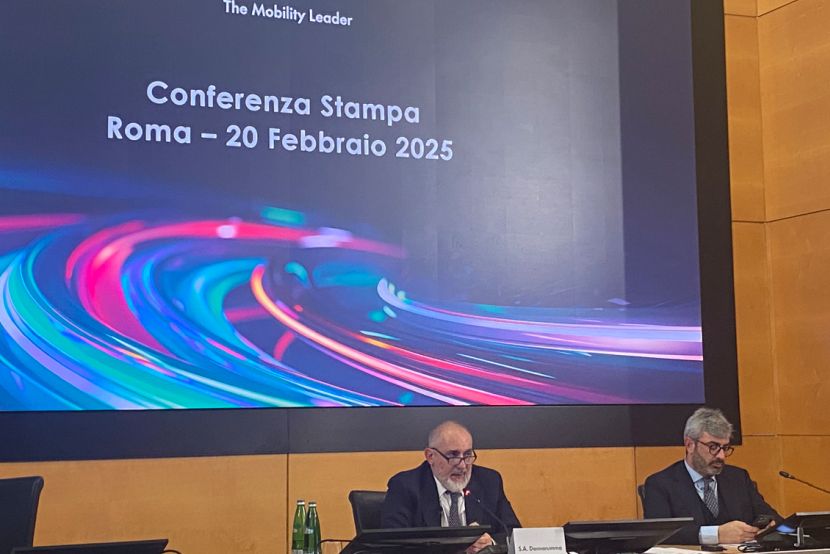ROME (ITALPRESS) – Planning, modernization, strengthening the system, reducing station saturation: these are the watchwords of Ferrovie dello Stato to make services more efficient and reduce inconvenience to passengers. “This is a state-owned company, it works not to produce profits but to execute a mission of management and development of services related to transport,” said FS Group CEO and general manager Stefano Antonio Donnarumma at a press conference. Rfi’s investments amount to 10 billion by 2024, an economic value driven by maintenance (for 30 percent), technological upgrading of the network and investment on stations. Goal also set for the technological upgrade of 700 kilometers of railway lines. While operating in a context characterized by an unprecedented number of construction sites and an unprecedented amount of investment, the FS Group is committed to studying specific initiatives aimed at improving performance, ensuring a balance between development needs, maintaining service quality and passenger and worker safety. “We have been working on the development of the country’s infrastructure focusing on high-speed rail. There is a theme of excellence, we work to achieve the best performance in terms of punctuality, develop more and more capillarity of supply. To do well,” the Ad added, “you have to not only have the money but spend it well. If we look at investments over the next 10 years, we have 100 billion in infrastructure. The value of Fs is a value not only to be inscribed to the 2 million passengers who travel every day, but also in investments that generate jobs and a turnover such as to impact the GDP significantly. “To date, an average of 1,200 worksites a day are open, of which 500 are dedicated to ordinary and extraordinary maintenance of the network and about 700 for new works. These works are essential to achieve the goals of the NRP and make the rail network more modern, efficient and safe. Increasing is the economic volume of works under construction, this is a proof of the booster effect due to the Pnrr. The size and complexity of the construction sites themselves have, in addition, increased. “What creates problems are the ordinary maintenance worksites, the safety worksites, not the Pnrr worksites that are new worksites. Everything that revolves around the construction of these yards, such as raw materials, is in trouble today,” Donnarumma clarified. “The Italian rail network is one of the best in Europe, but it is also the first and therefore the oldest. We will be celebrating 120 years so it needs to be modernized.” In 2023 160,000 outages were handled, in 2025 it will be 345,000. In front of a blackboard, with a black marker, Donnarumma explained with a drawing the ‘spike’ incident that paralyzed rail traffic on Oct. 2: “Our Termini station is powered by an ‘important’ cabin with an electric generator set and certain batteries. After the ‘spike’ incident the batteries went off and worked perfectly, where was the fault? The cabin is from 1998, it was not updated, modernized. Everything worked, the authorized technician did everything right but obsolescence created this, now the procedure has been changed, the cabs have been modernized. We have planned all the interventions that can be critical, so this event is unlikely to happen again. “The FS Group, in order to reduce congestion on some railway lines, is engaged in the study of specific initiatives aimed at optimizing supply. Since 2009, when the high-speed service was launched, the number of trains running on the network every day has significantly increased, from 188 per day in 2009 to 400 in 2024. The Milan-Rome axis, in particular, is one of the busiest high-speed routes in Europe, with more than 150 daily connections. Rfi, in agreement with railway companies and stakeholders, has identified an initial series of path reshaping measures throughout the national system starting with the Av network. In particular, the FS Group is following three lines of action: reducing congestion in stations and main lines, distributing the flow of trains evenly at different node stations; separating flows and reducing interference, maximizing line efficiency; and overhauling train slots, with the limitation of traffic peaks at critical times. The goal is thus to make the best use of all stations along the Milan-Rome-Naples backbone, as the high-speed system originally envisioned. Works such as the Florence undercrossing, line-doubling operations and technological upgrades are all instrumental in improving traffic management. “We don’t want to reduce trains, we have worked to decongest the network, we have rationalized trains and planned them but we have not suspended them. There will be construction sites for years, but we are doing planning, we are working a lot on technologies, we have to keep inconveniences at an acceptable level,” Donnarumma concluded.(ITALPRESS).-Photo: xc3/Italpress-

